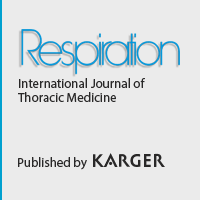| Title | Guideline for the Acquisition and Preparation of Conventional and Endobronchial Ultrasound-Guided Transbronchial Needle Aspiration Specimens for the Diagnosis and Molecular Testing of Patients with Known or Suspected Lung Cancer |
| Author(s) | van der Heijden E.H.F.M.a · Casal R.F.b · Trisolini R.c · Steinfort D.P.d · Hwangbo B.e · Nakajima T.f · Guldhammer-Skov B.g · Rossi G.h · Ferretti M.i · Herth F.F.J.j · Yung R.k · Krasnik M.l · on behalf of the International World Association for Bronchology and Interventional Pulmonology Task Force on Specimen Guidelines |
| Source | Respiration 2014;88:500–517 |
| Abstract | Rationale: Conventional transbronchial needle aspiration (TBNA) and endobronchial ultrasound (EBUS)-TBNA are widely accepted tools for the diagnosis and staging of lung cancer and the initial procedure of choice for staging. Obtaining adequate specimens is key to provide a specific histologic and molecular diagnosis of lung cancer. Objectives: To develop practice guidelines on the acquisition and preparation of conventional TBNA and EBUS-TBNA specimens for the diagnosis and molecular testing of (suspected) lung cancer. We hope to improve the global unification of procedure standards, maximize the yield and identify areas for research. Methods: Systematic electronic database searches were conducted to identify relevant studies for inclusion in the guideline [PubMed and the Cochrane Library (including the Cochrane Database of Systematic Reviews)]. Main Results: The number of needle aspirations with both conventional TBNA and EBUS-TBNA was found to impact the diagnostic yield, with at least 3 passes needed for optimal performance. Neither needle gauge nor the use of miniforceps, the use of suction or the type of sedation/anesthesia has been found to improve the diagnostic yield for lung cancer. The use of rapid on-site cytology examination does not increase the diagnostic yield. Molecular analysis (i.e. EGFR, KRAS and ALK) can be routinely performed on the majority of cytological samples obtained by EBUS-TBNA and conventional TBNA. There does not appear to be a superior method for specimen preparation (i.e. slide staining, cell blocks or core tissue). It is likely that optimal specimen preparation may vary between institutions depending on the expertise of pathology colleagues. |
| FREE PDF Download | http://www.wabipacademy.com/downloads/literature/diagnostic-2014-c.pdf |









